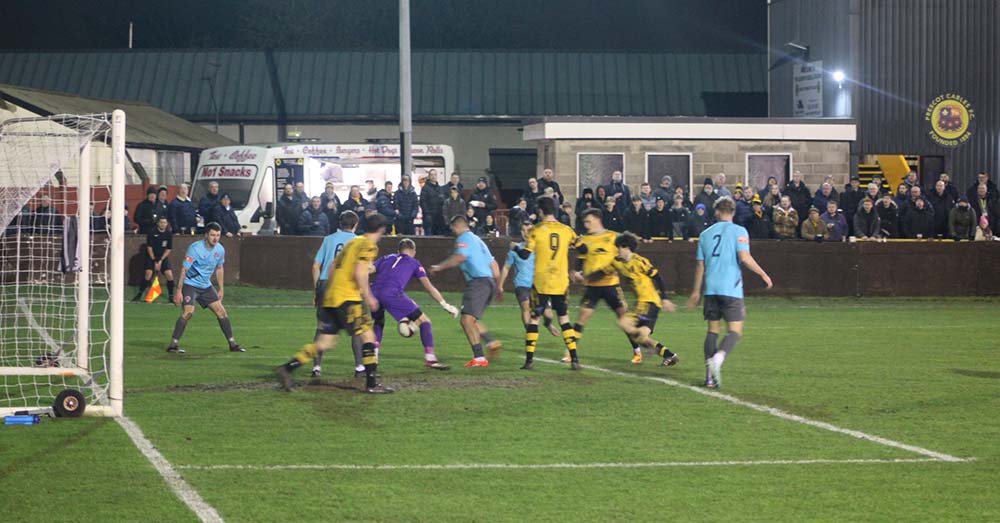A fortnight ago, I wrote about the unusually high number of non-League clubs which have already withdrawn from the Trident Leagues. Rather cheekily, I tagged Kieran Maguire when tweeting about the piece and the UK’s leading football finance expert told his 110,000 followers that the piece was “well worth a read”. Many people took Kieran’s advice and my original tweet had been seen more than 74,000 times at the time of writing. Others took the opportunity to ask Mr Maguire’s view of what the root causes of the problems are, with Harry (@Bleep450) asking:
How much of this is down to the lack of 4g pitches??
Matches getting cancelled regularly for the 4 months, lack of gate receipts whilst still having to pay outgoings.
The short answer is: not as much as you might think. Of the four clubs I originally highlighted, one, Hamworthy United, was already playing on an artificial pitch. However, when the Main Stand at the County Ground was condemned, the Hammers were forced to enter into a groundshare at Weymouth. This both increased the club’s costs and reduced income, meaning that by October, United had concluded that
“the ongoing financial burden of being unable to play at our home ground together with the general costs of keeping a team in the Southern League, the financial position of the club has become untenable.”
Hamworthy didn’t fold completely; their Reserve Team kept playing in local football, just as Marske United’s has following their withdrawal from the Northern Premier League. But, Harry makes a fair point. The weather is less predictable than ever and match referees are increasingly postponing games where the pitch had previously been declared fit by a local match official, often after the away side has travelled, which is expensive and inconvenient for both clubs. So it can be argued that the case for artificial pitches is stronger than ever. Not 4G, though, just yet. While 4G pitches do exist, as of February 2024, they hadn’t been approved by FIFA for use in football.
The problem for any club looking to take up the grass is one of cost. Like many things, a new 3G football pitch is a lot more expensive than it was a few years ago. According to Sport England’s Facility Cost Guidance, building a full size artificial grass pitch, plus the fencing and floodlighting, will cost between £1.03 million and £1.17 million, depending on the specifications required. Most non-League clubs would already have adequate floodlighting, so that might reduce the project costs by as much as 10% if the figures provided by Midstream Lighting are in line with industry averages. Even so, at 2023 prices, the average football club is looking at finding a seven-figure sum to put down a new pitch.
Then, there’s the ongoing running costs to think about. Sport England also provide a guidance document which suggests that clubs should put the equivalent of 3% of the original project cost aside each year. Most of that (2.5% of the project cost) goes into a ‘sinking fund’ for replacement of the surface at the end of its life, with 0.5% set aside for routine maintenance. So a club spending £1.17 million on their new pitch would need to be putting aside £35,000 per year in order to be following that advice.
The typical lifespan of a 3G football pitch is 10 years, according to S&C Slatter. Slatter also estimate that resurfacing a pitch which has come to the end of it’s life costs a lot less than installing a new one from scratch, but a resurfacing project can still cost up to £250,000. Of course, if a club has ring-fenced at least £29,250 in their sinking fund each year for a decade, then they should be fine.
However, in order to generate money they can put away, the football club needs to ‘sweat the asset’. This means making their pitch available to other organisations, such as grassroots football clubs, schools, and so on. Doing this – and using the new pitch for training, instead of hiring external facilities – can be a brilliant income source for clubs and reduce costs. The risk is that, as more and more clubs move on to 3G, the law of ‘supply and demand’ kicks in. A proliferation of 3G pitches in a locality would eventually mean that there were more booking slots available than teams who want to book them. This would drive down the cost of hiring an artificial pitch, which is great if you’re a hard-pressed Under-10 team looking for somewhere a bit cheaper to train, but not so good if you’re running a facility and trying to keep the floodlights on.
The final note of caution to sound is that, even with a 3G pitch, games can still get postponed. I have seen a flooded 3G pitch (there was no playing on that!) and, if it snows, a club might be able to clear the pitch, but not the stands or terracing, so the match would get called off on safety grounds anyway.
Don’t get me wrong; I’m not against 3G pitches at all. If a club has the resources to install one and use it well, they can be transformational. But they aren’t a ‘silver bullet’ which will solve all the problems affecting non-League football.
